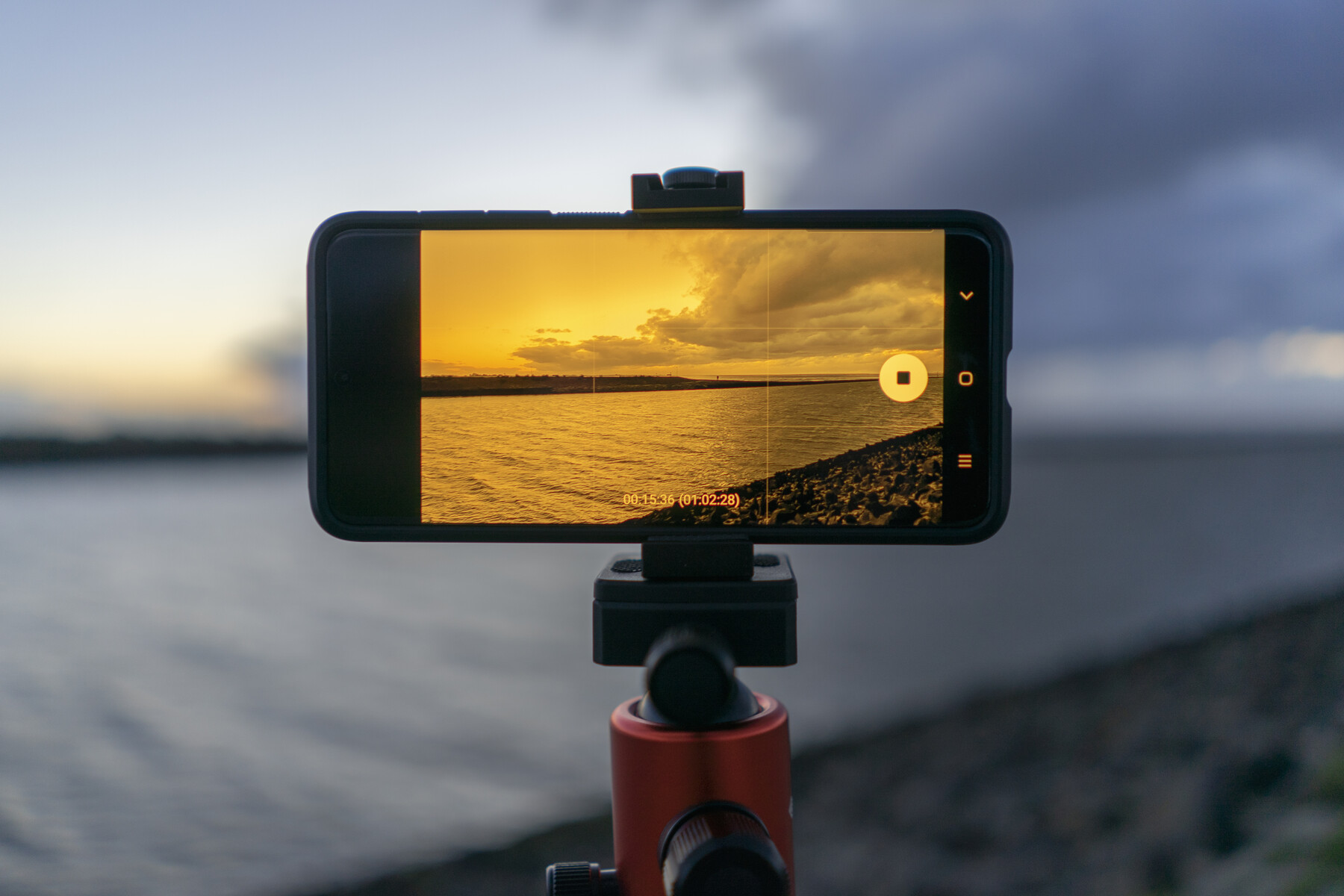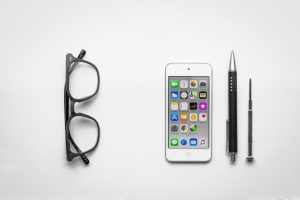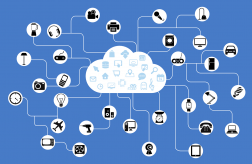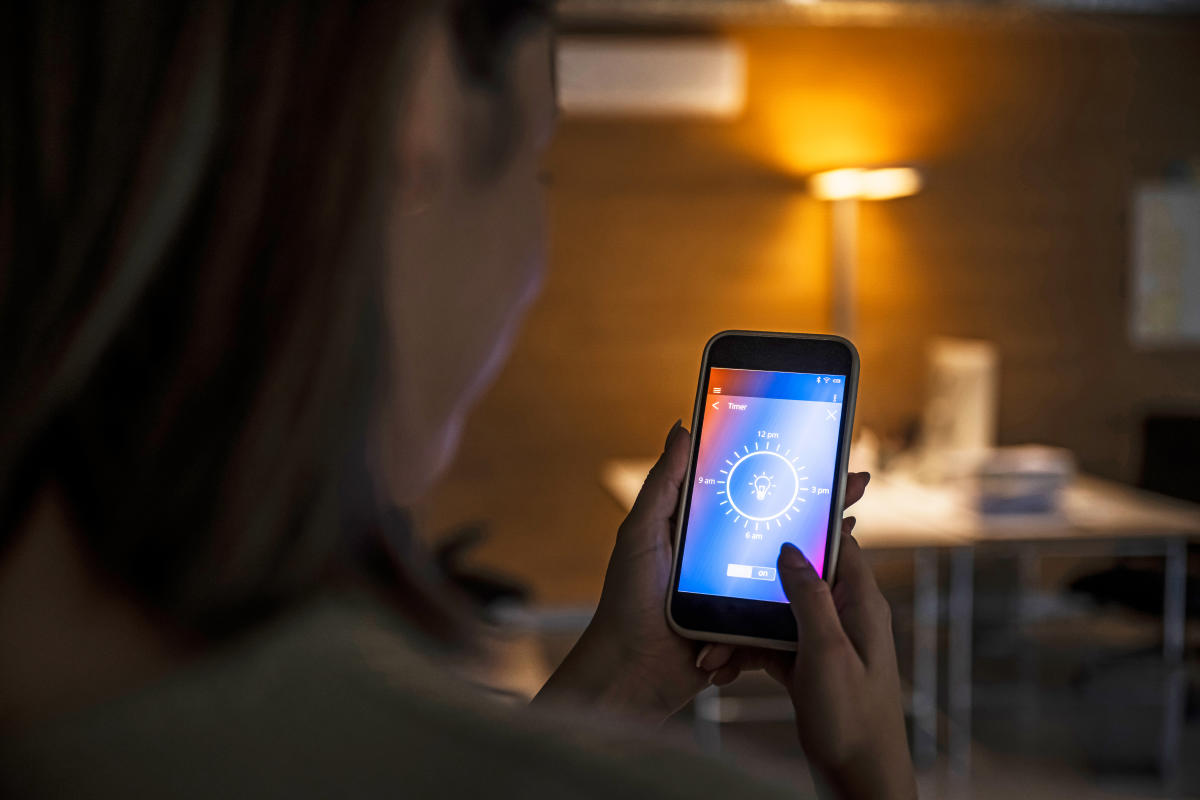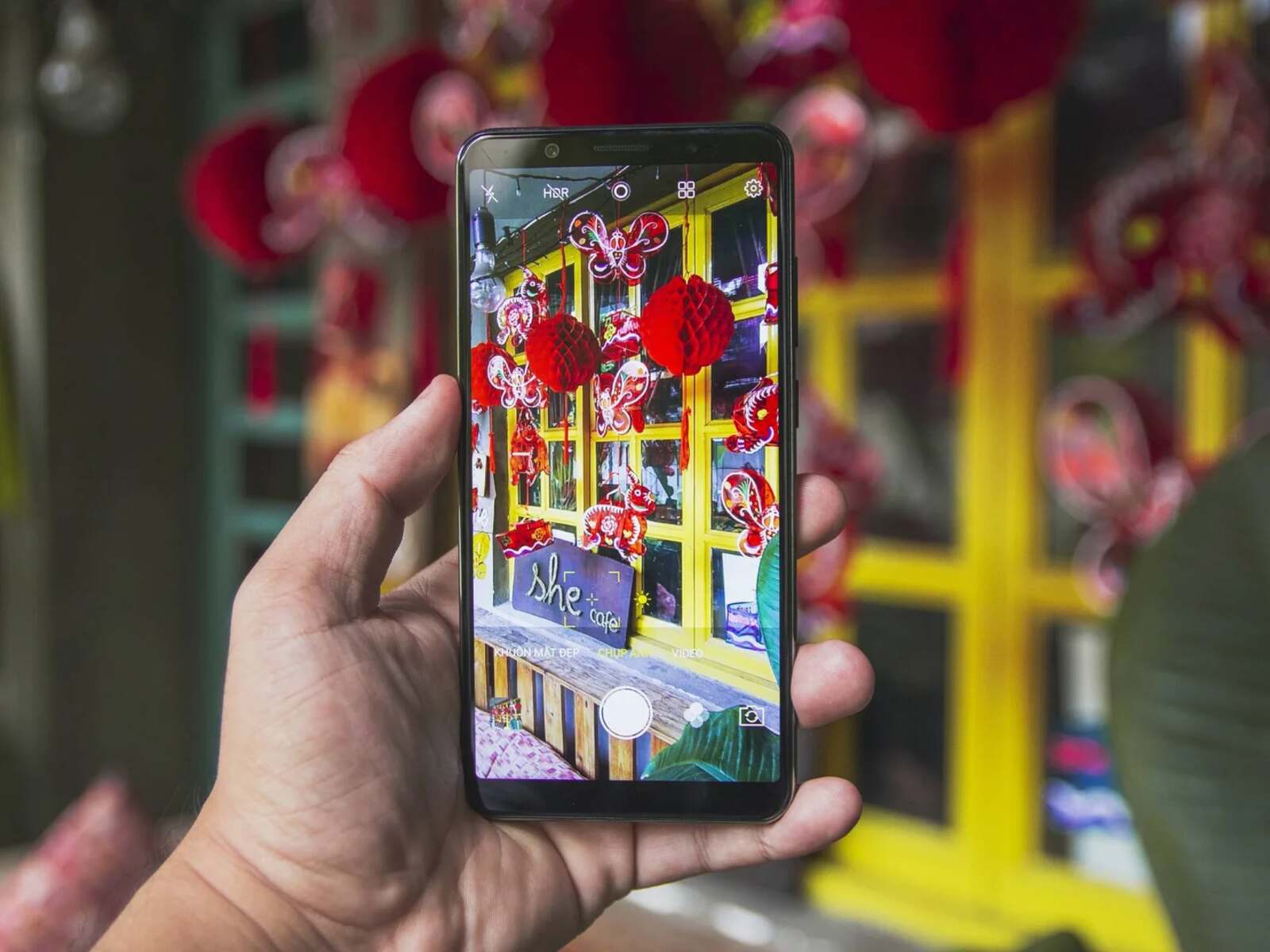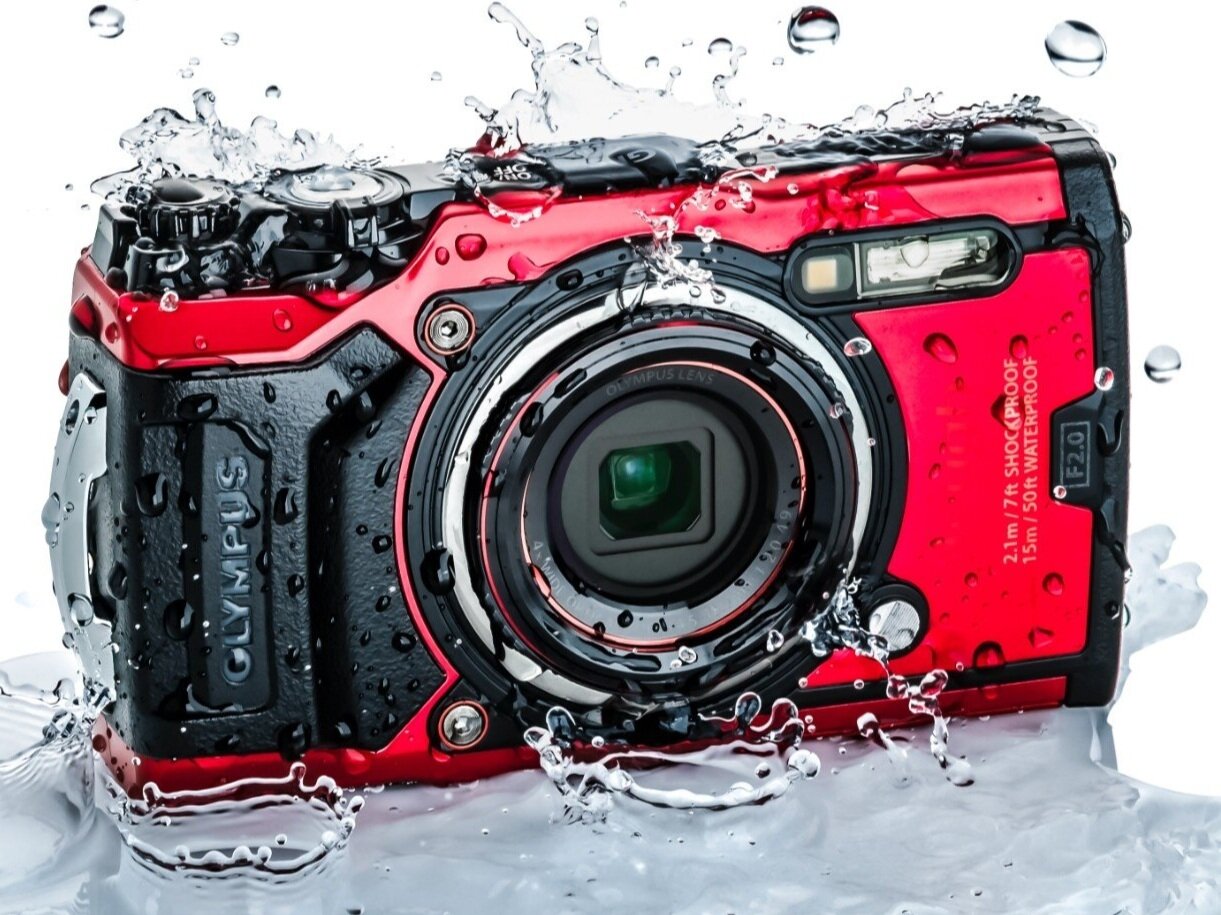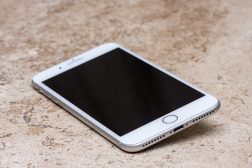Introduction
A smartphone has become an indispensable tool in our daily lives. From communication to entertainment, we rely on these devices for a wide range of tasks. As technology continues to advance, smartphone manufacturers are constantly looking for ways to make these devices even more useful and versatile. One of the ways to achieve this is by integrating various sensors into smartphones.
Sensors play a crucial role in enhancing the functionality of smartphones by providing valuable data and enabling new features and applications. These sensors can detect and measure different aspects of the environment and the user’s interaction with the device. By adding specific sensors, smartphones can offer an enhanced user experience and provide a plethora of new possibilities.
While smartphones already come equipped with a range of sensors such as camera sensors, accelerometers, and gyroscopes, there are several other types of sensors that could be integrated to make them even more useful. In this article, we will explore some of the sensors that could be added to smartphones to enhance their capabilities and usefulness.
Camera Upgradation
The camera is one of the most essential features of a smartphone. It allows users to capture and preserve precious moments and share them with others. While smartphone cameras have made remarkable advancements over the years, there’s always room for improvement.
One potential upgrade to smartphone cameras is the integration of advanced optical zoom capabilities. While some smartphones already offer digital zoom, which simply enlarges the image digitally, optical zoom would allow users to zoom in without sacrificing image quality. This would be particularly beneficial for capturing distant objects or details with clarity and precision.
Another area where camera upgradation could be beneficial is low-light photography. Despite recent advancements in low-light performance, smartphone cameras still struggle to capture high-quality images in dimly lit environments. By incorporating larger image sensors and improved noise reduction algorithms, smartphone cameras could deliver sharper and more detailed images in low-light conditions.
Furthermore, the addition of depth-sensing cameras could revolutionize smartphone photography. These cameras can accurately measure the depth of a scene, enabling features such as portrait mode and augmented reality applications. With depth-sensing cameras, users can capture professional-looking portraits with blurred backgrounds, similar to those produced by DSLR cameras.
Lastly, the integration of multi-camera setups could significantly improve the versatility of smartphone cameras. By combining different lenses with varying focal lengths, smartphones could offer users a wide range of shooting options—from ultra-wide-angle shots to telephoto zoom. This would allow users to capture breathtaking landscapes, group photos, and detailed close-ups, all with a single device.
Environmental Sensors
In addition to enhancing the camera capabilities, integrating environmental sensors into smartphones could provide users with valuable information about the surrounding environment. These sensors can detect various factors, including air quality, temperature, humidity, and more, allowing users to make more informed decisions and live a healthier lifestyle.
One important environmental sensor that could be added to smartphones is an air quality sensor. With air pollution becoming a growing concern in many cities worldwide, having a sensor that can measure air quality in real-time would be a significant advantage. This information could help users avoid areas with poor air quality and take necessary precautions to protect their health.
Temperature and humidity sensors are also valuable additions to smartphones. They can provide users with accurate readings of the ambient temperature and humidity levels, allowing them to monitor their surroundings and adjust accordingly. This can be particularly useful for outdoor activities and ensuring optimal conditions in indoor environments, such as homes and offices.
Additionally, integrating gas sensors into smartphones would enable users to detect the presence of harmful gases, such as carbon monoxide or volatile organic compounds (VOCs). This feature would be particularly beneficial for monitoring indoor air quality and ensuring the safety of users.
Ultraviolet radiation sensors are another valuable addition to smartphones. These sensors can measure the level of UV radiation from the sun, helping users protect their skin from harmful exposure. By providing real-time updates on UV levels, individuals can take appropriate sun protection measures, such as applying sunscreen or seeking shade, to reduce the risk of sunburn and skin damage.
By equipping smartphones with environmental sensors, users would have access to critical information about their surroundings, allowing them to make informed decisions and take necessary precautions to protect their health and well-being.
Biometric Sensors
Biometric sensors are already widely used in smartphones for unlocking devices and enhancing security. However, there are several other biometric sensors that could be incorporated to provide additional functionality and convenience to users.
Fingerprint scanners have become a standard feature in many smartphones, allowing users to securely unlock their devices with a simple touch. Going beyond fingerprint recognition, smartphones could integrate more advanced biometric sensors, such as facial recognition or iris scanning. These sensors can provide an added layer of security by accurately identifying individuals based on their unique facial features or iris patterns.
Another biometric sensor that could be added is a voice recognition sensor. With this sensor, smartphones can accurately verify users’ identities based on their unique voice patterns. This would not only enhance security but also enable voice-activated commands and personalized voice recognition features.
Heart rate sensors are already available in some smartphones, primarily for fitness tracking purposes. However, the integration of more advanced biometric sensors, such as electrocardiogram (ECG) sensors, would provide users with more detailed insights into their heart health. These sensors can detect and analyze the electrical signals of the heart, helping users monitor their heart rhythm and potentially detect early signs of cardiovascular problems.
Incorporating biometric sensors into smartphones can also expand their functionality in the realm of health and wellness. For example, integrating blood oxygen sensors can enable users to monitor their blood oxygen saturation levels, providing insights into their overall respiratory health and assisting in activities such as high-altitude hiking or managing respiratory conditions like asthma.
Furthermore, integrating biometric sensors for stress detection could help users manage and reduce stress levels. These sensors can analyze physiological markers such as heart rate variability and skin conductance to provide users with real-time feedback on their stress levels. This information can be valuable in fostering a healthier lifestyle and improving overall well-being.
By incorporating various biometric sensors, smartphones can offer enhanced security, personalized user experiences, and advanced health monitoring capabilities, making them even more indispensable in our daily lives.
Temperature and Humidity Sensors
Smartphones have come a long way in terms of functionality, but there are still areas where improvement can be made. Integrating temperature and humidity sensors into smartphones would provide users with valuable information about their surrounding environment, allowing them to make more informed decisions and adapt to the conditions accordingly.
Temperature and humidity sensors have a wide range of applications. For instance, in hot weather conditions, the sensor could provide real-time temperature readings, helping users determine the appropriate clothing and take necessary precautions to prevent heat-related illnesses. Similarly, in cold weather, the sensor can help users gauge the temperature and make informed decisions about wearing appropriate layers of clothing or staying indoors to avoid extreme cold.
Moreover, these sensors can prove invaluable for indoor environments such as homes and offices. By providing accurate humidity readings, users can gauge the moisture levels in their surroundings. This information can be particularly useful in areas with high humidity, as it can help prevent the growth of mold and mildew, which can lead to health issues. In dry environments, humidity sensors can alert users to low moisture levels, prompting them to use humidifiers or take measures to prevent dryness-related discomfort.
Integrating temperature and humidity sensors into smartphones can provide additional benefits beyond weather-related applications. For instance, the sensors can be utilized for monitoring the conditions of perishable goods. Users can use their smartphones to check the temperature and humidity levels in food storage areas, ensuring that fruits, vegetables, and other perishable items are stored under optimal conditions to maintain freshness and prevent spoilage.
In addition, temperature and humidity sensors can be helpful for individuals with specific health conditions. For example, those with respiratory issues such as asthma or allergies can benefit from monitoring air quality in their surroundings. By knowing the temperature and humidity levels, users can take appropriate measures to maintain a comfortable and healthy indoor environment.
By integrating temperature and humidity sensors into smartphones, users can have access to real-time environmental data, allowing them to make informed decisions and adapt to their surroundings. Whether it’s dressing appropriately for the weather, preventing mold growth, or ensuring optimal conditions for perishable goods, these sensors offer practical solutions and convenience to enhance the overall smartphone experience.
Gas Sensors
Incorporating gas sensors into smartphones can bring numerous benefits by providing users with the ability to detect and monitor the presence of harmful gases in their surroundings. Gas sensors can serve as a valuable tool for maintaining safety, health, and overall well-being.
One of the primary applications of gas sensors in smartphones is the detection of carbon monoxide (CO) gas. CO is a colorless, odorless, and highly toxic gas that can be emitted by malfunctioning gas appliances or incomplete combustion processes. By integrating CO sensors into smartphones, users can receive real-time notifications and alerts when elevated levels of CO are detected, allowing them to take immediate action to protect themselves and their loved ones from the dangers of CO poisoning.
Additionally, gas sensors can detect other harmful gases such as volatile organic compounds (VOCs). VOCs are emitted by various household products, including cleaning supplies, paints, and adhesives, and can contribute to indoor air pollution. With a gas sensor-equipped smartphone, users can monitor the levels of VOCs in their environment and make informed decisions to improve indoor air quality, such as choosing low VOC-emitting products or increasing ventilation.
Furthermore, gas sensors in smartphones can be beneficial in outdoor environments. For example, they can monitor air pollution levels, detecting pollutants such as nitrogen dioxide (NO2) or ozone (O3). This information empowers users to make informed decisions regarding outdoor activities, choosing routes with lower pollution levels or taking necessary precautions for individuals with respiratory conditions.
Moreover, gas sensors in smartphones can be used to detect potentially flammable or explosive gases, alerting users to potential hazards in their surroundings. This can enhance safety in industrial or construction settings, as well as in everyday situations where gas leaks or other dangerous situations may occur.
Integrating gas sensors into smartphones not only enhances user safety but also promotes awareness and encourages individuals to actively contribute to environmental health. By providing real-time gas detection capabilities, smartphones can help users make informed decisions, minimize exposure to harmful gases, and take steps to improve air quality in their surroundings.
Ultraviolet Radiation Sensors
Ultraviolet (UV) radiation is a concern when it comes to sun exposure and its effects on our skin health. Integrating ultraviolet radiation sensors into smartphones can play a crucial role in providing users with valuable information about UV levels and helping them protect their skin from harmful radiation.
UV radiation sensors in smartphones can measure the intensity of UV rays from the sun. This information can be valuable for individuals who spend a lot of time outdoors, as it can help them determine the appropriate level of sun protection needed. By providing real-time updates on UV levels, users can take necessary precautions such as applying sunscreen, wearing protective clothing, and seeking shade during peak UV hours to minimize the risk of sunburn, premature aging, and skin cancer.
Furthermore, smartphones equipped with UV radiation sensors can be particularly useful for individuals with sensitive skin or those prone to sunburn. By providing personalized recommendations based on the current UV index, users can make informed decisions about how much time to spend outdoors and whether additional sun protection measures are necessary.
In addition to personal protection, integrating UV radiation sensors can also contribute to public health initiatives. Smartphone apps can utilize UV data from these sensors to provide location-based UV alerts and recommendations to users. This can be especially beneficial for individuals living in areas with high UV levels or when traveling to sunny destinations.
Moreover, UV radiation sensors can raise awareness about the potential risks associated with sun exposure. These sensors can provide users with a tangible measure of UV intensity, promoting a better understanding of the importance of sun protection and reducing the incidence of sun-related skin damage and diseases.
Integrating UV radiation sensors into smartphones empowers users to make informed decisions regarding sun exposure and take the necessary steps to protect their skin from harmful UV radiation. By promoting sun safety and raising awareness about the risks associated with UV exposure, smartphones can contribute to better skin health and overall well-being.
Gesture Recognition Sensors
Gestures are a natural form of communication, and integrating gesture recognition sensors into smartphones can enhance the user experience by enabling intuitive and hands-free interaction. With gesture recognition, users can perform actions and control their smartphones through simple hand movements or gestures.
One of the main benefits of gesture recognition sensors is the ability to perform actions without physically touching the device. For instance, users can answer or reject calls by making a specific hand gesture, eliminating the need to press buttons or swipe on the screen. This feature can be particularly useful when users have their hands full or when they want to avoid direct contact with their smartphones, such as in cleanliness-sensitive environments.
Gesture recognition sensors can also enable convenient navigation through various applications and menus. Users can swipe their hand left or right to switch between different screens or tilt their device to scroll through a webpage or a document. These gestures provide a seamless and natural way to interact with smartphones, making the user experience more ergonomic and intuitive.
Furthermore, incorporating gesture recognition into smartphones can open up possibilities for controlling multimedia playback. Users can control music playback by making simple hand gestures, such as raising their hand to increase the volume or swiping their hand horizontally to change tracks. This hands-free control allows users to enjoy their favorite music or videos without interruptions or the need to physically interact with the device.
Additionally, gesture recognition sensors can contribute to accessibility by catering to users with limited mobility or dexterity. For individuals with disabilities, gestures can offer an alternative means of interacting with smartphones, enabling them to perform various functions and navigate through apps with ease.
Gesture recognition sensors can also be utilized for augmented reality (AR) applications. With the ability to detect hand gestures and movements, smartphones can facilitate interaction with virtual objects in AR environments, enhancing the immersive experience and expanding the possibilities for gaming, education, and other interactive applications.
By incorporating gesture recognition sensors into smartphones, users can enjoy a more natural, intuitive, and hands-free interaction with their devices. From answering calls to navigating through menus and controlling multimedia playback, gesture recognition opens up new possibilities and enhances the overall user experience.
Proximity Sensors
Proximity sensors are crucial components that can be integrated into smartphones to enhance functionality and improve user experience. These sensors are designed to detect the presence of nearby objects or obstacles and enable various features and functionalities based on proximity.
One of the primary uses of proximity sensors in smartphones is to facilitate automatic screen on/off functionality. When a user brings their phone close to their face during a call, the proximity sensor detects the proximity and automatically turns off the screen. This avoids accidental touch inputs and prevents the user’s face from activating functions on the screen, such as muting the call or activating other features inadvertently.
Additionally, proximity sensors can enable gesture-based interactions. For example, when a user hovers their hand or finger near the screen, the proximity sensor can detect the presence and trigger specific actions. This can be especially useful for navigating through menus or controlling certain functions without directly touching the screen, providing a more intuitive and hands-free user experience.
Proximity sensors also play a vital role in power management. When a smartphone is placed in a pocket or a bag, the proximity sensor can detect the absence of nearby objects and adjust the device’s power settings accordingly. This helps conserve battery life by dimming the screen or disabling certain features when the device is not in use, improving overall energy efficiency.
Furthermore, proximity sensors can be utilized in proximity-based applications and features. For instance, they can trigger alerts or actions when the user approaches certain locations or objects, such as receiving notifications when approaching a specific destination or triggering the flashlight when bringing the phone close to a light source.
In the realm of augmented reality (AR) applications, proximity sensors can enable interactions between virtual objects and the physical environment. By detecting the distance between the device and physical objects, the proximity sensor can enhance the accuracy and realism of AR experiences, such as placing virtual objects in the user’s surroundings according to the detected proximity.
By integrating proximity sensors into smartphones, users can benefit from enhanced convenience, improved power management, and more intuitive interactions. Whether it’s automatic screen on/off functionality, gesture-based controls, or proximity-based features, these sensors add a new layer of functionality and user experience to smartphones.
Ambient Light Sensors
Ambient light sensors in smartphones play a crucial role in optimizing the display’s brightness based on the surrounding lighting conditions. These sensors detect the amount of light present in the environment and adjust the screen’s brightness accordingly, providing users with an optimal viewing experience.
One of the main advantages of ambient light sensors is their ability to automatically adjust the screen’s brightness in response to changing lighting conditions. When users move from a brightly lit environment to a dimly lit room or vice versa, the ambient light sensor ensures that the display brightness is adjusted to provide optimal visibility and reduce eye strain.
Moreover, ambient light sensors contribute to energy efficiency. By dynamically adjusting the screen’s brightness based on the ambient light levels, smartphones can conserve battery life. In well-lit environments, the sensor can lower the screen brightness to minimize power consumption, while in darker environments, it can increase brightness to maintain visibility without unnecessarily draining the battery.
In addition to conserving battery life, ambient light sensors enhance user comfort by providing a more comfortable viewing experience. By adjusting the display brightness according to the ambient light, users are less likely to experience discomfort, eye fatigue, or unnecessary strain, particularly in situations where the light is too bright or too dim.
Ambient light sensors also contribute to improving the readability of the displayed content. In bright lighting conditions, the sensor can increase the brightness to make the content more readable and vibrant. Conversely, in low-light conditions, the sensor can decrease the brightness to ensure optimal visibility without causing discomfort or disturbing others in dimly lit environments.
Furthermore, ambient light sensors have benefits beyond display brightness. They can also be utilized in camera applications to enhance image quality. By measuring the ambient light, the sensor can assist with adjusting the camera’s settings, such as exposure and white balance, to capture more accurate and balanced images in different lighting environments.
Integrating ambient light sensors into smartphones ensures that users have a comfortable and optimized viewing experience. From conserving battery life to reducing eye strain and improving image quality, these sensors contribute to overall user satisfaction and enhance the functionality of smartphones.
GPS Sensor
The Global Positioning System (GPS) sensor is a fundamental component that has become an integral part of smartphones. By integrating GPS sensors into smartphones, users gain access to a wide range of location-based services and functionalities that enhance navigation, provide real-time information, and offer convenience in various aspects of life.
One of the primary benefits of GPS sensors in smartphones is accurate and reliable navigation. With the help of satellite signals, GPS sensors enable users to determine their precise location and receive turn-by-turn directions. Whether it’s driving to a new destination, finding the shortest route, or navigating through unfamiliar areas on foot, the GPS sensor provides real-time guidance, reducing the chances of getting lost and saving valuable time.
In addition to navigation, GPS sensors enable the use of location-based applications and services. From finding nearby restaurants, attractions, or services to accessing real-time traffic updates, weather information, or public transportation schedules, GPS-enabled smartphones offer a vast array of convenient services that rely on accurate location data.
The integration of GPS sensors also enhances safety and security. In emergency situations, GPS sensors can assist in locating individuals in need of help, enabling emergency services to respond more effectively. GPS tracking features can also provide peace of mind for parents, allowing them to keep track of their children’s whereabouts.
Moreover, GPS sensors are invaluable for fitness and outdoor enthusiasts. These sensors can track and record various activities such as running, hiking, or cycling, providing users with distance, speed, and elevation data. This enables users to monitor their progress, set goals, and analyze their performance, enhancing the overall fitness experience.
GPS sensors have also paved the way for location-based augmented reality (AR) applications. By utilizing GPS data, AR applications can overlay virtual information onto the real world, offering users an augmented and interactive experience. From location-specific gaming to informative tourist guides, GPS-enabled AR applications open up a world of possibilities.
Integrating GPS sensors into smartphones has revolutionized the way we navigate, access information, and engage with our surroundings. From accurate navigation to location-based services, safety features, fitness tracking, and augmented reality experiences, GPS-enabled smartphones enrich our lives by providing convenience, efficiency, and endless possibilities.
Barometer
The inclusion of a barometer sensor in smartphones brings added functionality and benefits, particularly in terms of weather forecasting, outdoor activities, and altitude measurement. The barometer sensor enables smartphones to measure atmospheric pressure, which can provide valuable information about weather conditions and elevation changes.
One of the significant advantages of a barometer sensor in smartphones is its contribution to weather forecasting. By measuring atmospheric pressure, smartphones can detect changes in air pressure that are indicative of approaching weather systems. Users can receive real-time updates and forecasts, allowing them to plan their activities, such as outdoor events or travel, based on the expected weather conditions.
The barometer sensor is particularly useful for outdoor enthusiasts and adventurers. It enables smartphones to provide users with accurate altitude measurements, allowing hikers, mountaineers, and other outdoor enthusiasts to determine their elevation and track their ascents and descents. This information aids in navigation, trail planning, and ensuring safety in high-altitude environments.
Moreover, the barometer sensor can assist in predicting weather changes during outdoor activities, such as hiking or camping. A sudden drop in atmospheric pressure can signify an approaching storm or other adverse weather conditions. By monitoring the barometric trends, outdoor enthusiasts can make informed decisions regarding their activities and seek shelter or adjust plans accordingly.
The integration of a barometer sensor also contributes to the overall accuracy and precision of fitness tracking applications. For instance, when users are climbing stairs or hiking uphill, the sensor can detect the changes in atmospheric pressure associated with elevation gains. This allows fitness tracking apps to provide more accurate data, such as calorie expenditure and elevation-based achievements, offering a more comprehensive and rewarding fitness experience.
Furthermore, a barometer sensor can enhance the functionality of location services. By combining GPS data with atmospheric pressure measurements, smartphones can offer more accurate altitude information for location-based services and apps. This can be useful for terrain analysis, geolocation-based gaming, or providing users with elevation-specific recommendations.
Incorporating a barometer sensor into smartphones provides users with valuable information about weather conditions, altitude, and atmospheric changes. Whether it’s planning outdoor activities, receiving accurate weather forecasts, or improving fitness tracking accuracy, the barometer sensor enhances the functionality and usefulness of smartphones in various domains.
Compass
The compass sensor is a valuable addition to smartphones, offering users a reliable and convenient way to determine direction and navigate their surroundings. By integrating a compass into smartphones, users can easily access orientation information, making it easier to find their way and explore new places.
One of the primary uses of a compass sensor in smartphones is for simple navigation and finding directions. With the help of the sensor, users can determine the cardinal points (north, south, east, and west) and orient themselves accordingly. This is particularly useful when traveling in unfamiliar locations, exploring new cities, or hiking in remote areas, where traditional landmarks may be scarce.
Moreover, compass sensors can greatly enhance the functionality of map and navigation applications. By combining compass data with GPS technology, smartphones can offer more accurate and reliable turn-by-turn directions. The compass enables the map application to rotate and align with the user’s current orientation, providing an intuitive and easy-to-follow navigation experience.
Furthermore, compass sensors can be beneficial for outdoor enthusiasts and adventurers. Whether it’s hiking, camping, or geocaching, the compass sensor can help users navigate off-road or in areas with limited or no GPS signal. By keeping track of the direction, users can follow a specific bearing, ensuring they stay on the right track and reach their destination safely.
Another application of the compass sensor is in augmented reality (AR) applications. By integrating the compass data with the smartphone’s camera and AR technology, users can experience virtual objects and information overlay on the real world, aligned with their current direction. This opens up possibilities for location-based gaming, informative travel guides, and immersive AR experiences.
In addition to navigation, the compass sensor can also be utilized for various practical purposes. Users can use their smartphones as a level tool, thanks to the compass sensor’s ability to detect the tilt or inclination of the device. This can come in handy when hanging picture frames, setting up furniture, or conducting DIY projects that require accurate leveling.
By integrating a compass sensor into smartphones, users gain a valuable tool for navigation, exploration, and practical applications. From simple direction finding to enhancing navigation apps, aiding outdoor adventures, enabling AR experiences, and providing leveling capabilities, the compass sensor expands the functionality of smartphones and makes them even more useful in everyday life.
Accelerometer
The accelerometer sensor is a vital component in smartphones, providing information about device orientation, movement, and acceleration. By integrating an accelerometer into smartphones, users gain access to a wide range of features and functionalities that enhance gaming experiences, fitness tracking, augmented reality, and user interactions.
One of the primary applications of the accelerometer sensor in smartphones is for screen orientation. The sensor detects the device’s orientation and adjusts the screen accordingly, allowing users to view content in portrait or landscape mode based on how they hold their phones. This feature enhances the user experience by providing optimal screen orientation for different activities, such as reading, watching videos, or playing games.
In gaming, the accelerometer sensor enables motion-based gameplay. By tilting or rotating the device, users can control the movement of characters, vehicles, or objects in games. This adds a level of interactivity and immersion, making gaming experiences more engaging and enjoyable.
Moreover, the accelerometer sensor contributes to fitness tracking and activity monitoring. With the sensor’s ability to detect movement and acceleration, smartphones can track steps, distance traveled, and calories burned during various activities, such as walking, running, or cycling. This functionality allows users to monitor their fitness goals, set targets, and analyze their progress.
Additionally, the accelerometer sensor is instrumental in augmented reality (AR) applications. It provides information about the device’s movement and orientation, allowing virtual objects and information to align accurately with the real world. By integrating the accelerometer data with the smartphone’s camera and AR technology, users can experience interactive and immersive AR experiences.
Furthermore, the accelerometer sensor contributes to user interactions and gestures. It enables features like shake-to-refresh, where users can shake their devices to trigger content refresh in certain applications. It also detects gestures such as tapping, swiping, or tilting, allowing users to interact with their smartphones in more intuitive and natural ways.
The accelerometer sensor is also used for screen auto-rotation, where the screen switches from portrait to landscape or vice versa when the device is tilted. This feature is especially useful when browsing the web, viewing photos, or reading documents, as it ensures that the content fits the screen and is displayed optimally.
By integrating an accelerometer into smartphones, users can enjoy enhanced gaming experiences, accurate fitness tracking, immersive AR applications, and intuitive user interactions. The accelerometer sensor expands the capabilities of smartphones, making them versatile tools for entertainment, health, and everyday tasks.
Gyroscope
The gyroscope sensor is a crucial component in smartphones that detects rotational motion and provides information about the device’s orientation and angular velocity. By incorporating a gyroscope into smartphones, users gain access to a wide range of features and functionalities that enhance gaming experiences, virtual reality (VR) applications, image stabilization, and more.
One of the primary applications of the gyroscope sensor in smartphones is for gaming. The sensor enables users to control gameplay by tilting and rotating their devices. This offers a more immersive and interactive gaming experience, allowing users to steer vehicles, navigate mazes, or aim in shooting games by simply moving their smartphones.
In addition to gaming, the gyroscope sensor is instrumental in VR applications. By combining the gyroscope data with the smartphone’s display and motion sensors, users can experience virtual reality environments and interact with them by moving their heads, mirroring their real-world motions within the virtual space. This adds a sense of realism and immersion to VR experiences.
Moreover, the gyroscope sensor contributes to image stabilization in smartphone cameras. By detecting small movements and vibrations, the sensor enables smartphones to compensate for shaky hands when capturing photos or recording videos. This results in sharper, clearer images and smoother video footage, even in challenging conditions or while on the move.
Furthermore, the gyroscope sensor enhances motion-based gestures and user interactions. It detects rotational movements and angular velocity, allowing users to perform actions such as rotating their devices to switch between landscape and portrait modes or shaking the device to trigger certain functions, like shaking to undo or shake to refresh.
In navigation and indoor mapping applications, the gyroscope sensor assists in providing more accurate directional information. By combining the data from the gyroscope with other sensors like GPS and accelerometers, smartphones can offer improved turn-by-turn directions and more precise location services.
The gyroscope sensor also plays a crucial role in augmented reality (AR) applications. By providing precise information about the device’s orientation in 3D space, the gyroscope allows virtual objects to align accurately with the real-world environment. This enables users to interact with virtual objects and information seamlessly, enhancing the AR experience.
Incorporating a gyroscope into smartphones expands the possibilities for gaming, VR experiences, image stabilization, motion-based gestures, navigation, and AR applications. The gyroscope sensor enhances the functionality and user experience of smartphones, making them versatile devices for entertainment, creativity, and daily tasks.
Fingerprint Scanner
The integration of a fingerprint scanner in smartphones has revolutionized the way we secure our devices and authenticate ourselves. Fingerprint scanners offer a convenient and secure method of unlocking smartphones, authorizing transactions, and protecting sensitive information.
One of the primary benefits of a fingerprint scanner in smartphones is its ability to provide secure and reliable device unlocking. By registering a user’s unique fingerprint, smartphones can accurately verify their identity and allow instant access to the device. This eliminates the need for traditional PIN codes or patterns, offering a faster and more convenient unlocking experience.
In addition to unlocking the device, fingerprint scanners provide enhanced security for sensitive information stored on smartphones. Users can utilize their fingerprints to authenticate access to apps, files, and folders, ensuring that only authorized individuals can access confidential data. This is particularly beneficial for banking apps, password managers, and other applications that store personal and financial information.
Fingerprint scanners also play a crucial role in facilitating secure mobile transactions. By associating a user’s fingerprint with payment services or digital wallets, smartphones can confirm the user’s identity during transactions, providing an extra layer of security. This enables users to make seamless and secure mobile payments with a simple touch of their fingers.
Furthermore, fingerprint scanners contribute to privacy and data protection. With biometric authentication, users can encrypt and unlock encrypted files or folders on their smartphones using their fingerprints. This adds an extra level of protection to sensitive documents, photos, or other confidential information, ensuring that only authorized users can access them.
Moreover, fingerprint scanners offer a higher level of personalization and convenience. Different users can register their fingerprints on the same device, allowing for multiple user profiles. This enables seamless switching between user accounts, maintaining individual preferences, and securing personal data on shared devices.
The integration of fingerprint scanners in smartphones has also impacted user experiences beyond security. Users can employ their fingerprints to perform various functions in addition to unlocking the device, such as capturing photos, answering calls, or controlling media playback. These added functionalities provide a seamless and efficient user experience.
Incorporating fingerprint scanners into smartphones offers a secure, convenient, and personalized method of device unlocking, data protection, mobile transactions, and user interactions. With their reliability, accuracy, and ease of use, fingerprint scanners have become an indispensable feature that enhances security and improves the overall user experience of smartphones.
Conclusion
The integration of various sensors into smartphones has significantly enhanced their functionality and usefulness in our daily lives. From camera upgrades to environmental sensors, biometric sensors, and more, these sensors have transformed smartphones into powerful tools that provide valuable information and enable new features and applications.
Camera upgrades have allowed users to capture high-quality photos and videos, with features like optical zoom, low-light performance, and depth-sensing capabilities. Environmental sensors, such as temperature and humidity sensors, air quality sensors, and ultraviolet radiation sensors, provide users with real-time information about their surroundings, enabling them to make informed decisions for their health and well-being.
Biometric sensors, including fingerprint scanners, facial recognition, and voice recognition, have improved device security and provided personalized and seamless user experiences. Temperature and humidity sensors, gas sensors, and barometers have contributed to safety, health, and comfort by detecting harmful gases, monitoring air quality, and providing weather information.
Furthermore, sensors like GPS, compass, and accelerometers have transformed smartphones into powerful navigation tools, resulting in accurate guidance, location-based services, and immersive augmented reality experiences. Proximity sensors and ambient light sensors have improved usability and energy efficiency by adjusting screen brightness, enabling hands-free gestures and automating certain functions.
These sensors have revolutionized the way we interact with smartphones and the world around us. They have made smartphones more intelligent, versatile, and personalized, enhancing our daily experiences and providing us with valuable data and features at our fingertips.
In conclusion, the integration of various sensors in smartphones has opened up new possibilities and enhanced the functionality of these devices. From capturing breathtaking photos and videos to monitoring our health, navigating our surroundings, ensuring our safety, and providing personalized experiences, these sensors have truly made smartphones indispensable tools in our modern lives.







